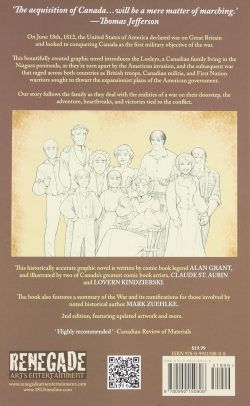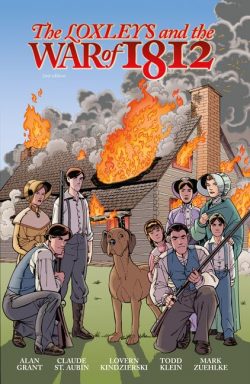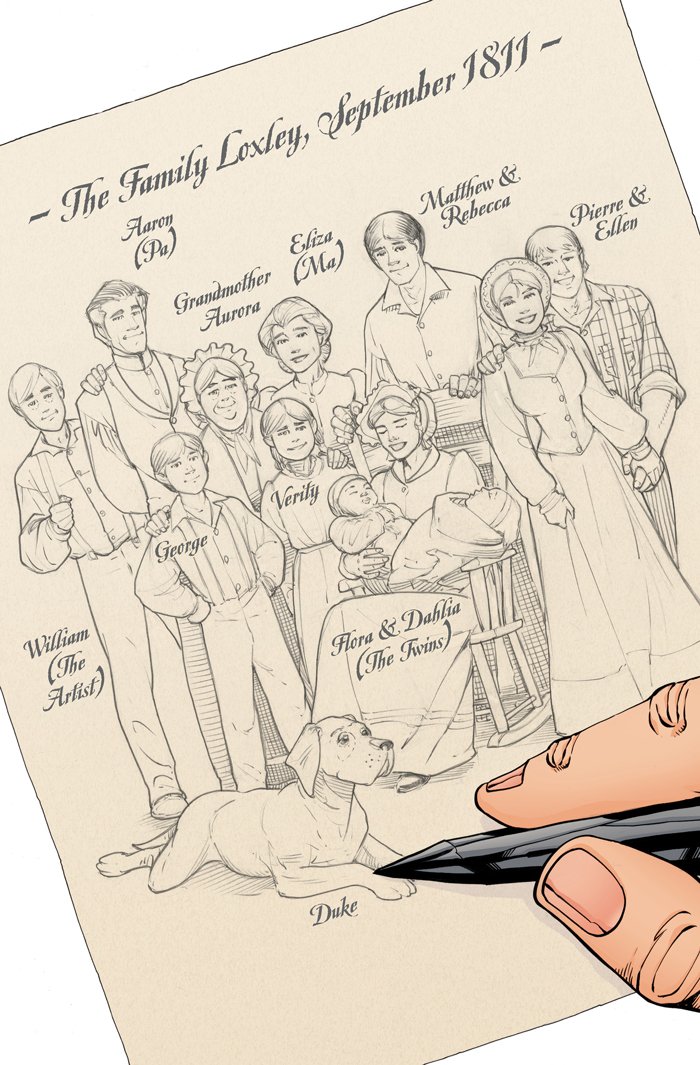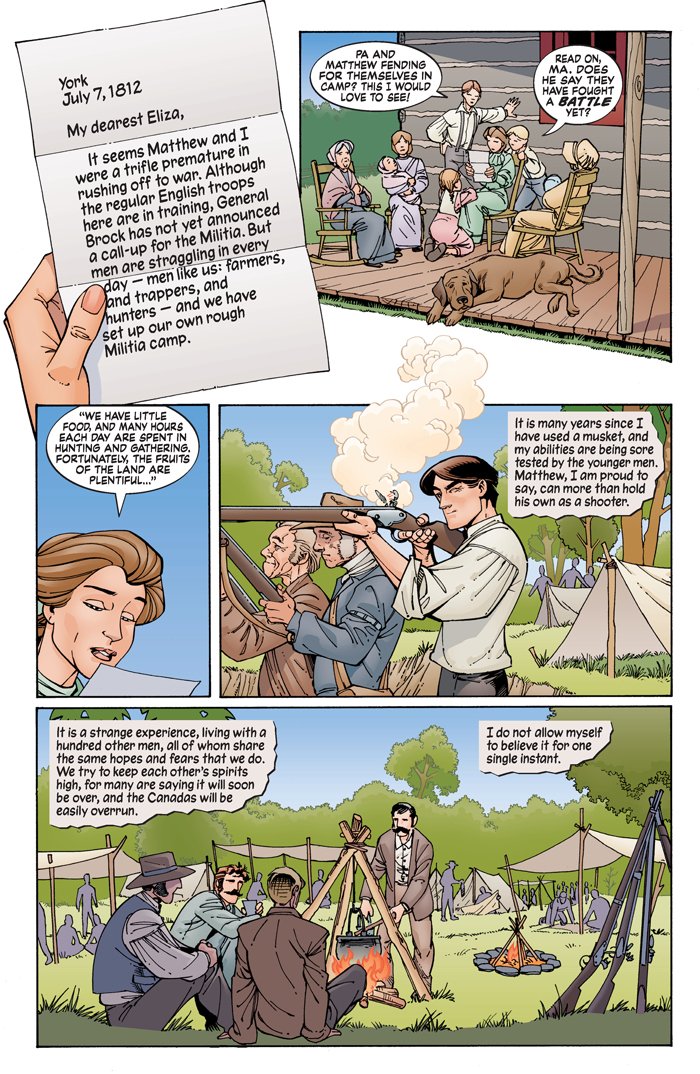

By Chris Claremont & John Byrne, Marv Wolfman, Tom DeFalco, Danny Fingeroth, John Romita Jr, Frank Springer, Keith Pollard, Alan Kupperberg, Terry Austin, Mike Esposito, Alfredo Alcala, Danny Bulanadi, Armando Gil, Ricardo Villamonte, Frank McLaughlin, Vince Colletta & various (MARVEL)
ISBN: 978-1-3029-2212-2 HB/Digital edition)
This book includes Discriminatory Content produced in less enlightened times.
There are quite a few comics anniversaries this year. Some of the most significant will be rightly celebrated, but a few are going to be unjustly ignored. Here’s one you should have no trouble finding physically or in digital formats…
Until relatively recently US comics and especially Marvel had very little in the way of positive female role models and almost no viable solo stars. Although a woman starred in the very first comic of the Marvel Age, The Invisible Girl took decades to become a potent and independent character in her own right – or even just be called “woman”. The company’s very first starring heroine was leather-clad, whip-wielding crimebuster Black Fury: imported from a newspaper strip created by Tarpe Mills in April 1941.
The seductive sentinel was resized and repackaged as a reprint for Timely’s funnybooks and renamed Miss Fury, enjoying a 4-year (1942-1946) run – although her tabloid incarnation carried on until 1952. Fury was actually predated by Silver Scorpion, who debuted in Daring Mystery Comics #7 (April 1941), but the homegrown hero was rapidly relegated to a minor position in the book’s line-up and she had a very short shelf-life.
Miss America premiered in anthological Marvel Mystery Comics (#49, November 1943), created by Otto Binder & artist Al Gabriele. After a few appearances, she won her own title in early 1944. Miss America Comics lasted, but the costumed crusader did not as – with the second issue (November1944) – the format changed, becoming an amalgam of teen comedy, fashion feature and domestic tips magazine. Feisty take-charge superheroics were steadily squeezed out and the title is most renowned now for introducing virginal evergreen teen ideal Patsy Walker. Other woman warriors appeared immediately after the War, the majority as spin-offs/sidekicks of established male stars such as distaff Sub-Mariner Namora (debuting in Marvel Mystery Comics #82, May 1947 before graduating to her own 3-issue series in 1948).
She was soon joined by the Human Torch’s secretary Mary Mitchell who, as Sun Girl, helmed her own 3-issue 1948 series before becoming a wandering sidekick and guest star in Sub-Mariner and Captain America Comics. Draped in a ballgown and wearing high heels, masked detective Blonde Phantom was created by Stan Lee & Syd Shores for All Select Comics #11 (Fall 1946) whilst cover-dated August 1948, kind-of, sort-of goddess Venus debuted in her own title, becoming the gender’s biggest Timely-Atlas-Marvel success… until the advent of the “Jungle Girl” fad in the mid-1950s.
Her triumph came mostly by dint of the superb stories and art by the great Bill Everett and by ruthlessly changing genres from crime to romance to horror as any popular trend inched forward in other media…
Don Rico & Jay Scott Pike’s Jann of the Jungle was just part of an anthology line-up in Jungle Tales #1 (September 1954), yet she took over the title with the 8th issue (November 1955). Jann of the Jungle ran until June 1957 (#17), spawning a host of in-company imitators like Leopard Girl, Lorna the Jungle Queen and so on…
During the costumed hero boom of the 1960s, Marvel experimented with a title shot for Inhuman émigré Madame Medusa in Marvel Super-Heroes (#15, July 1968) and a solo series for the Black Widow in Amazing Adventures #1-8 (August 1970 to September 1971). Both were sexy, reformed villainesses, not wholesome girl-next-door heroes – and neither lasted solo long on their own. With a costumed crazies craze subsiding as the 1970s, began, Stan Lee & Roy Thomas looked into creating a girl-friendly boutique of “heroines” written by and for women. Opening shots in this mini-liberation war were Linda Fite, Marie Severin & Wally Wood’s Claws of the Cat and Night Nurse by Jean Thomas & Win Mortimer (both #1’s cover-dated November 1972). Modern day jungle queen Shanna the She-Devil #1 – by Carole Seuling & George Tuska – came out in December 1972, but despite impressive creative teams none of these fascinating experiments lasted beyond a fifth issue.
Red Sonja, She-Devil with a Sword, caught every one’s attention in Conan the Barbarian #23 (February 1973) and eventually won her own series, whilst in Giant-Size Creatures #1 (July 1974), The Cat mutated into Tigra, the Were-Woman. However, the general editorial position was still “books starring chicks don’t sell”…
The company kept on plugging though, and eventually found the right mix at the right time when Ms. Marvel launched in her own title (cover-dated January 1977). She was followed by equally copyright-protecting Spider-Woman (Marvel Spotlight #32: February 1977), who secured her own title 15 months later) and Savage She-Hulk (#1 February 1980). The last was supplemented by the music-biz inspired Dazzler who sagely premiered in top-selling title Uncanny X-Men #130 the same month, before inevitably graduating to her own book.
Thus, please find gathered here that mutant-motivated launch tale from #130-131, a crafty crossover from Amazing Spider-Man #203 and then #1-13 of Dazzler, all cumulatively covering cover-dates February 1980 to March 1982. Before it all kicks off there’s even an informative Introduction ‘Dazzler and Me’ by sometime scribe Danny Fingeroth…
Previously and elsewhere: Having saved Edinburgh and perhaps the world from reality-warping Proteus, The X-Men return to Charles Xavier at their Westchester home where – thanks to sinister psionic predator Jason Wyngarde, Jean Grey/Phoenix is increasingly experiencing visions of a former life as a spoiled, cruel slave-owning child of privilege, contrasting sharply with her renewed love for Scott Summers/Cyclops, but the home atmosphere is troubled by another discordant factor. Xavier is insensitively intent on training the team, haughtily oblivious that this group are grizzled, seasoned veterans of combat, rather than the callow teenagers he first tutored.
Elsewhere, a cabal of mutants and millionaires plot murder and conquest. Black King Sebastian Shaw, White Queen Emma Frost and the rest of The Hellfire Club hierarchy know Wyngarde is an ambitious, presumptuous upstart, but the possibility of subverting the almighty Phoenix to their world-dominating agenda is irresistible…
Beginning here, the action opens as two new mutants manifest, and Xavier must split the team to initiate a “first contact” with both. He goes with Storm, Wolverine and Colossus to Chicago and meets the nervous parents of naive 13-year-old Kitty Pryde. She has just realised that, along with all the other problems of puberty, she now uncontrollably falls through floors and walks through walls…
However, no sooner does the Professor offer to admit enrol her in his select and prestigious private school than they are all attacked by war-suited mercenaries and shipped by Emma Frost to the Hellfire Club. Only Kitty escapes, but instead of running, she stows away on the transport; terrified but intent on saving the day…
The other Homo Superior neophyte to debut sees Cyclops, Phoenix and Nightcrawler head into Manhattan’s club district, tracking a disco singer dubbed ‘Dazzler’. They are unaware that they too have been targeted for capture. However, Kitty’s attempts to free the Hellfire base captives forces the villains to tip their hand early and with the assistance of “disco diva” Dazzler – AKA Alison Blaire and a wannabee musician who converts sound to devastating light effects – the second mercenary capture team is defeated…

The drama concludes in #131 as Kitty is forced to frantically ‘Run for Your Life!’ – happily, straight into the arms of the remaining X-Men. Soon the plucky lass, after an understandable period of terror, confusion and kvetching, leads a strike on the lair of the White Queen: freeing Wolverine, Colossus and Xavier as Frost faces off in a deadly psionic showdown with a Phoenix far less kind and caring than ever before…
Suitably introduced into the Marvel milieu, Dazzler promptly encored in Amazing Spider-Man #203 (April 1980) ‘Bewitched. Bothered and Be-Dazzled!’ wherein Marv Wolfman, Keith Pollard & Mike Esposito (and inking friends) jammed a short tale of opportunism as old arachnid adversary Lightmaster tapped into Blaire’s inherent abilities to liberate himself from an all-enveloping “light dimension”. Having returned to Earth the malign menace kept Dazzler as living battery to amp up his powers until Spider-Man stepped in and put him down…
Dazzler the character had been born of another of those 1980-1990s doomed-from-the-start cross-media deals wherein comics companies attempted to break out of their “ghetto” into the real money world. In 1979 Disco specialists Casablanca Records began an development project with Marvel to create a TV based character who would release records like the Archies or The Monkees, but set in an animated Marvel Universe. A giant-sized comics special was set into motion but when the deal was cancelled, the company was left with a lot of talented people going “now what?” since Dazzler had already been launched and guested in the company’s top titles (her shot in Fantastic Four #217 the same month as the Spider-Man tale and nipped-in-the-bud flirtation with Johnny Storm is not included here). Failing to find other record companies willing to commit, big boss Jim Shooter decreed that the comics special would be expanded/recycled as #1 & 2 of her own title…
After the singer went dark until for a year she debuted again in ‘So Bright This Star’ (cover-march 1981) and credited conceptually to Alice Donenfeld, John Romita Jr., Shooter, Stan Lee, Al Milgrom, Roger Stern and Tom DeFalco with DeFalco, Romita Jr., Alfredo Alcala, and Walt Simonson actually delivering the pages of an epic premier.
Unknown to everyone but heroes and villains, Blaire is a sound-transducing mutant able to convert noise of any kind (rhythmic is best!) into light that she can manipulate and direct. She’s also a performer still trying to make it big in music. A promising law student, she dropped college studies and forever disappointed her austere father – Judge Carter Blair – to pursue a frivolous, worthless life on stage. At least Grandma Bella still supports her, confident that one day Dazzler will be a star…
Now down to the dregs of her savings and still stumbling into crimes and emergencies at every turn, Alison checks in regularly with her superhero pals but cannot drop the hope that fame, not fighting is her destiny. That seems less likely than ever as, in Asgard, evil sorceress Amora the Enchantress awaits a shift in the cosmic axis.
For the person standing in one location on Midgard at the correct moment, awesome unspeakable energies are ready for the taking. Sadly, that’s the stage of the Numero Uno club. When the advertised star performer falls ill with a mystery ailment. Amara successfully auditions for the spot but only until Dazzler gets a last-minute call to try-out. With the goddess out and the secret mutant in, Enchantress is most displeased and makes plans to take that stage no matter what…
Alison only got the gig thanks to hedonist pal/fan Hank The Beast McCoy, and he brings all the Avengers, X-Men, Fantastic Four and other super-doers to her big night in #2. Before long Enchantress strikes, using magic and an army of mythical beasts and monsters to disrupts Alison’s act and secure the coveted axis spot until an army of superheroes come to Dazzler’s aid in all-out battle bonanza ‘Where Demons Fear to Dwell!’ with the roller-skating woman warrior (no really!) personally dealing with the sorceress New York street-style…
After a promising start, however, the series quickly reverted to hoary company traditions regarding books read by girls. These again tapped into and blended older male-assumed tropes of females seeking independence and careers whilst also seeking love and a settled home life.
And lots of shots of women in underwear, dressing and undressing or getting into and out of baths and showers.
However, gradually the faithful standbys faded and Dazzler began facing and dealing with ever-tougher challenges. It would some while before later scribes like Archie Goodwin added some modern innovations and true confirmation that girls just didn’t want the same kind of stories as pubescent males – at that time still much of Marvel’s fan base and possibly a fair proportion of the writing staff and illustrators…

Alison’s life changes as she lucks into an (W.C. Fields-channelling) agent/promoter – Harry S. Osgood – who begins shaping her music career immediately after a full-page Bonus Pinup, as DeFalco, Romita Jr., Alan Kupperberg, Danny Bulanadi & Armondo Gil detail how a show for UNICEF leaves Alison at the UN just as Doctor Doom tries to reclaim part of his magical arsenal in ‘The Jewels of Doom!’ Despite her most valiant efforts, Dazzler is defeated and dragged to the Iron Despot’s lair, intended as a weapon in his battles with dream demon Nightmare. Despite battling her own darkest nature in ‘Here Nightmares Abide!’ (DeFalco, Frank Springer, Bulanadi & Gil), Blair blasts her way back to Earth and destroys the purloined jewels; earning a brutal punishment from Doom…
Ricardo Villamonte inks a change of pace yarn in #5 as ‘Tell Joey I love Him!’ sees Alison recuperate in hospital and overhear an old lady’s pleas. Mrs Anita Cartelli is married to the mob and worries about her son growing up in the life, and do-gooder Dazzler promises to look into it. It’s a bold but bad move, as Joey is also streel level vigilante the Blue Sheild, violently dismantling the Bo Barrigan gang from the inside… although he does need some laser assistance once the mobster unleashes his killer robots…
The ups-&-downs of building her career are constantly exacerbated by obnoxious Lancelot Steele; a sexist macho jerk/stage manager/field rep for Harry on road gigs, and Alison’s growing fondness for her doctor Paul Janson is giving her pause , but all that is put in proper perspective when DeFalco, Fingeroth, Springer, Quickdraw Studios & Gil advise ‘The Hulk May Be Hazardous to Your Health!’ after a last-minute cancellation drops Allie and her band at Gordon University just as desperate Bruce Banner seeks to burgle their science labs for a possible cure for his “condition”…
Sadly although Banner and Blaire hit it off, when his alter ego inevitably arrives student riots and National Guard assaults literally bring the house down in ‘Fort Apache, the Hulk!’
Fabled Good Girl artist/romance comics inker Vince Colletta joins Fingeroth, DeFalco & Springer, as intrigue overtakes action in ‘Hell… Hell is for Harry!’ The music magnate is being ruthlessly targeted and tormented for undescribed past transgressions and sinister mastermind Techmaster has begun including Alison in his sly assaults, but she has more than enough problems of her own. The situation with Paul is worsening and she feels constantly diminished and belittled. Worst of all, somebody is following her everywhere…
When the Enforcers (Ox, Montanna & Fancy Dan) wreck Harry’s office, it compels Osgood to reveal his shared pas with Techmaster, but even Dazzler is not ready when they come back for her, employing the tactics that once defeated Spider-Man. She is far better prepared for the rematch…
Her own enigmatic stalker strikes next. Mr. Meeker works for Federal energy thinktank Project Pegasus but greatly oversteps his remit, using shady contracts to rendition Blaire and ultimately hold her at the upstate facility. Despite the strident protests of in-house superhero Wendell Quasar Vaughn Dazzler is held and cruelly experimented upon like any other energy-based villain and monster, until pushed too far she tries to escape and triggers a mass breakout in #9’s ‘The Sound and the Fury!’
Some Pegasus internees deserve to be there, and when living sound monster Klaw goes on a murderous rampage, almost killing Quasar, Dazzler reluctantly absorbs him. However, the monumental energy increase brings her to the attention of planet devouring Galactus and ‘In the Darkness… A Light’ reveals why the space god needs the over-juiced mutant to extract his fugitive herald Terrax from a black hole. Sadly, the victim doesn’t want to be saved and ‘…Lest Ye Be Judged!’ displays just how annoyed she can get when pushed too far…

Returned to Earth and her normal power levels, Alison has a hard time explaining why she’s been off the grid for so long – even her draconian dad was starting to worry – before ‘Endless Hate!’ drops her right into the most unconventional conclusion of the Techmaster saga.
Closing this initial collection with gentle probing of Alison’s past and discussion of her long missing mother. Dazzler #13 had Fingeroth, Springer & Colletta depict ‘Trial …and Terror!’ as still furious Mr. Meeker abuses the federal power of Pegasus to regain control of Blaire by charging her with Klaw’s murder. Remanded to Riker’s Island and dumped amidst he savage superhumans in the women’s wing, Alison overcomes the mighty Titania and the Grapplers (Screaming Mimi, Letha & Poundcakes) before getting her day in court and proving that she was paying attention in law school…
To Be Continued..
The rather meagre bonus offerings here include the house ad from all May 1981 Marvel titles plus the original art for #1 page 1 by Romita Jr. & Alcala, prior to much modification and editorial adjustment, and a simply huge Biographies section on the many folk involved in getting Dazzler into the spotlight.
Although very much of its troubled times, this collection also sees the beginnings of the transformative shift in attitudes that resulted in women becoming less ornamental, no longer decorative and always the authors of their own fates. Even if not to everyone’s taste there is enough of significance here to make the Dazzler worthy of any modern readers attention.
© 2020 MARVEL.




































